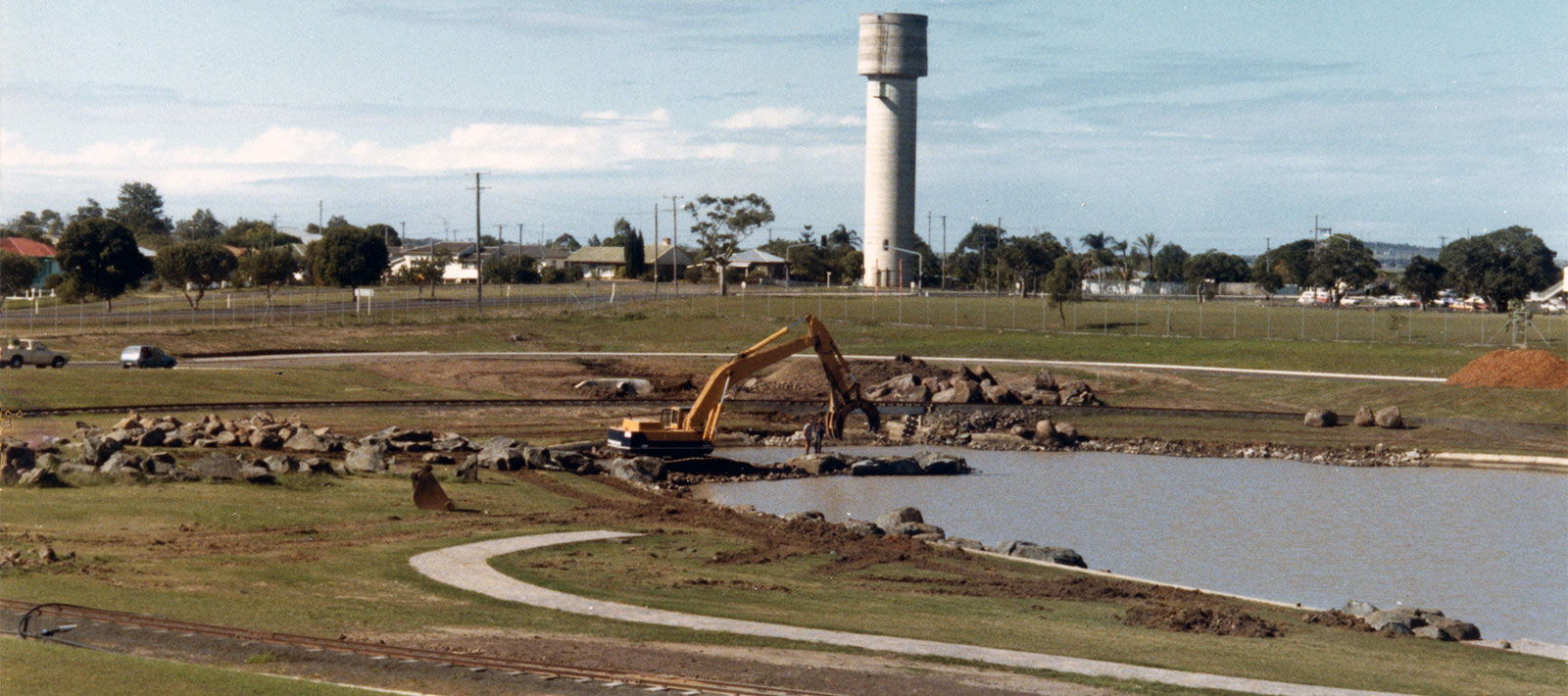Allocation of land
At the time of the original survey in 1881, 29 acres (11.6 hectares) was set aside for School Reserve and Botanic Gardens. The land was leased out and some areas were planted with sugar cane. Other areas now gazetted "Botanic Gardens" were water reserves and grazing leases. The lagoon next to Thornhill Street was a water supply for the Railways Department steam trains until the advent of diesel locomotives. The lagoons were also used by early settlers as a fresh water supply and a resting and watering place for cattle using the stock route.
Gazettal
In March, 1894, a submission was made to the Gooburrum Divisional Board to have the area gazetted Botanical Gardens with watering access for cattle and the neighbourhood. On the 4th April, 1894, Messrs. James Palmer, Samuel Johnston, R.S. Aiken and D.W. Mahoney were nominated Trustees of the Reserve for Botanical Gardens. On the 9th June, 1894 the land was proclaimed and gazetted Botanical Gardens and the four nominees were officially appointed by the then Governor of Queensland, Sir Henry Wylie Norman. On the 6th April, 1896, the Trustees asked that an additional five acres (2 hectares) of land be added to the Gardens, this area is now the site for Fairymead House, as this would be a good site for a Caretaker's Cottage. Despite objections from the Land Ranger of the time, the addition was granted in January, 1897.
Management handed to Bundaberg City Council
On the 16th May, 1912, the Council of the Shire of Gooburrum was made Trustees of the Reserve for Botanical Gardens. On the 21st March, 1918, the control of North Bundaberg and subsequently, the Botanical Gardens Reserve was handed over to the Bundaberg City Council, now the Bundaberg Regional Council. This action allowed the City Council to control, maintain and improve the reserve. The land had previously been under the control of the then Department of Public Lands.
Prior to the Bundaberg City Council taking control of North Bundaberg, an area on the south bank of the Burnett River, Queen’s Park, had been set aside for Botanical Gardens. The area contained two types of native plant communities, the lower alluvial soils supported closed forest (rainforest) with the higher areas supporting open eucalyptus forest (Sclerophyll forest). At some stage the gardens became infested with introduced grasses and weeds which supported fires, and as a result certain species may have been eliminated. Queen’s Park continues to be rich in species including rainforest, open forest and mangrove species.
Since the inception of the Botanical Gardens, the area has undergone some survey changes and has been leased out to various people for agricultural purposes. All original vegetation was cleared and the aquatic vegetation altered by the introduction of the exotic water plant, Eichornia crassipes (Water Hyacinth) at some time in the last century. The plant infestation was noted in a letter written by the Land Ranger on 11th July, 1918, during a dispute over leasing of the land. On the 18th December, 1990 the C.S.I.R.O. released a Weevil species into the third lagoon for the implementation of Biological control of the Water Hyacinth.
Additional Land
In 1981, the Bundaberg City Council requested and granted that other leasehold lands be added to the Botanical Reserve. Additional freehold lands were purchased in 1986 and added to the Reserve, giving a total area of 27.4 hectares. The present gardens were officially gazetted on 23rd June, 1988.

